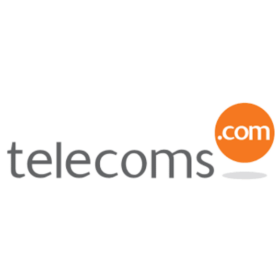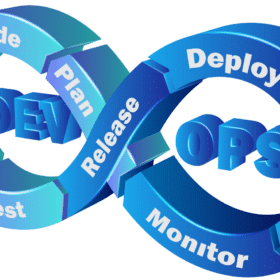Enea’s role in this Telenor deployment
At Enea, we are proud to contribute to this significant collaboration, which unites eight leading telecom industry vendors to enable the dynamic and automated deployment of network slices. As part of this innovative initiative, Enea delivers advanced network functions, including the Enea Stratum Unified Data Repository (UDR). Early testing has already demonstrated remarkable success, reducing slice deployment times by an impressive 70%.
As we explore in this blog post, the GSMA Open Gateway API initiative and Open Linux’s CAMARA project play a key role in advancing this groundbreaking work. However, implementing such solutions is more complex than simply integrating a CAMARA API with mobile operators’ data sources. We believe an abstraction layer, platform, or gateway will be essential, offering the northbound CAMARA API while managing the intricate southbound API interlocks and complexities of scattered and siloed data sources.
To dive deeper, check out our blog post: Network Data Exposure & APIs – Learn from History.
REDHAT ARTICLE ABOUT THE DEPLOYMENT
Telenor offers a slice of 5G at the edge for AI apps
By rallying its ecosystem partners, Telenor is bringing together 5G connectivity, open platforms, and AI capabilities to power the next wave of transformation in communication, industry, and smart societies.
Advanced 5G services in combination with new technologies such as AI will change the digital landscape. This will create secured, open, programmable platforms that enable hundreds of new applications and services for various industries. Telenor has been continuously developing its advanced 5G capabilities with strategic partners and customers across business, technology, and research.
Telenor’s focus on advanced 5G includes platforms for edge cloud and the integration of AI use cases, running on Red Hat OpenShift. The collaboration with Red Hat has now reached the next phase: network slicing and application programming interface (API)-driven networks for low latency and multi-region scenarios.
Network APIs will enable AI to scale on 5G infrastructure, seamlessly switching between slices without the need to prepackage services. Open APIs enable enterprises to add mobility and expand functionality to devices on their networks, integrating with existing or future IT infrastructure. Open APIs and programmability will be critical for enabling private networks to differentiate on connectivity, giving users optimal performance at the right time for their needs. Standardization efforts such as CAMARA and TM Forum are further supporting interoperability, portability and a simpler developer experience across a complex ecosystem.
This is fostering new players, partnerships, and go-to-market models, driving the commercial maturation of 5G to serve emerging use cases that demand low latency and dedicated reliable connectivity. To support this opportunity to transform 5G into an innovation platform, Telenor has been building dynamic, fit-for-purpose virtual networks to meet new demands of enterprise customers.
Ecosystem collaboration
Telenor has a strong track record of close collaboration with partners developing 5G services and is standardizing on Red Hat as an open, vendor-neutral platform layer. Red Hat OpenShift provides a unified horizontal application platform spanning core, edge and different cloud environments. Telenor is using Red Hat Device Edge for the cases where low power and minimal footprint are needed and Red Hat OpenShift for access to a wider set of platform services, including Red Hat Advanced Cluster Management to support the full application lifecycle at the edge. With the planned addition of Red Hat OpenShift AI, Telenor will be able to take advantage of AI lifecycle management including data gathering and preparation, model development, training and deployment, model observability and rapid automated deployment via GitOps at the customer’s chosen location.
This hybrid approach provides central visibility and network-wide consistency of experience and configurations – including for Telenor’s security footprint – while scaling.
Red Hat is supporting Telenor with the onboarding of partners to the platform, based on its deep expertise in certifying and integrating with diverse providers. Telenor is running a best-in-class multi-vendor platform with 5G network and edge AI resources. Druid Software, core network provider, Cumucore, Oracle Communications, i2i Systems, Enea and Nokia are providing network components and software, including Nokia’s Network as Code for network programmability, together with Emblasoft for slice monitoring. Intel brings power data inference with edge compute capabilities and form factors (DPU, GPU, CPU etc.). Tata Consultancy Services (TCS) is providing the customer platform using TM Forum APIs.
Together the partners have implemented a standardized mechanism for product orders that enables automated order fulfillment and status updates. Telenor’s customers can customize the network via APIs and order 5G standalone slices and edge compute resources.
The platform is capable of multi-tenancy, helping reduce footprint at the edge, bring higher density, and having the ability to deploy once and reuse anywhere. Telenor can offer customers to choose where to locate each deployment as needed based on latency requirements – where the edge worker nodes are as close to the 5G core as possible – or in different countries according to sovereignty requirements or to adhere to local laws and regulations.
Predictive AI use cases
Telenor has been able to demonstrate multiple AI-enabled 5G end-to-end solutions that enhance digital experiences, improve performance, support data security, and enable continuous operations in various industries:
- Disaster response with Airolit: combining 5G technology for reliable, high-speed connectivity with drones equipped with AI-assisted vision to enhance public safety and disaster response. This includes using drones for aerial surveillance in hard-to-reach areas and rapidly boosting 5G coverage where needed. Additionally, these technologies integrate data protection and compliance with privacy standards.
- Emergency response with Airbus: in emergency situations, such as an ambulance navigating through a traffic jam, it can be challenging for dispatchers to access video feeds from various sources due to network congestion. Advanced 5G can secure high performance and stable communication through our system via a single API call. This makes operations much more reliable, efficient, and secure, which can help save lives.
- Public safety with Nokia: Real-time eXtended Reality Multimedia (RXRM) software combined with 360° cameras can make a great impact in public safety scenarios for fire departments or police, in telemedicine, or consistent monitoring. It offers a real-time 360° video and 3D audio solution, saving up to 90% network bandwidth. It provides a scalable setup for critical response situations, capturing full visual and audio details from any location. With advanced 5G integrated, RXRM adapts autonomously to available network capacity, ensuring the best possible video quality at any time.
- Road safety with Xense Vision & KTH Royal Institute of Technology: 5G- and edge AI- enabled intersections and autonomous cars for situational awareness systems drives the future of autonomous vehicles in urban environments. Real-time data exchange with smart infrastructure enables autonomous vehicles to interact seamlessly with their surroundings, helping create safer and more efficient traffic systems.
- Optimized AI workload placement: with the addition of small language models at the edge, local tasks can be done on the edge device while offloading more complex tasks to the edge datacentre or central datacentre. We have 5G connected devices doing local model inference and central large language models (LLMs) for when larger generative AI models are needed.
- AI offloading from device to edge: Telenor is working with partners on new 5G handsets that offload video and geocoding to the edge to save device battery. This can be applied, for example, to gaming or the live event industry.
Looking ahead
As customer needs continue to evolve and we continue to develop this disruptive technology together, it’s vital that we foster a value-driven market. The focus of our innovation must be on delivering superior value to our customers and ensuring the technology is available for all.
4G has had a significant impact on human-to-human interactions. 5G will have a greater impact on wider society but needs to be commercially stable in serving machine-to-machine communications before new solutions and handsets become available. Explorative approaches in partner ecosystems, across business, technology and research, are key to success.
Modern architectures and cloud-native by design are proving fundamental to harness the value of advanced 5G services and AI. Together Red Hat and Telenor are focused on building open hybrid cloud platforms to be flexible and powerful for whatever is yet to come.







